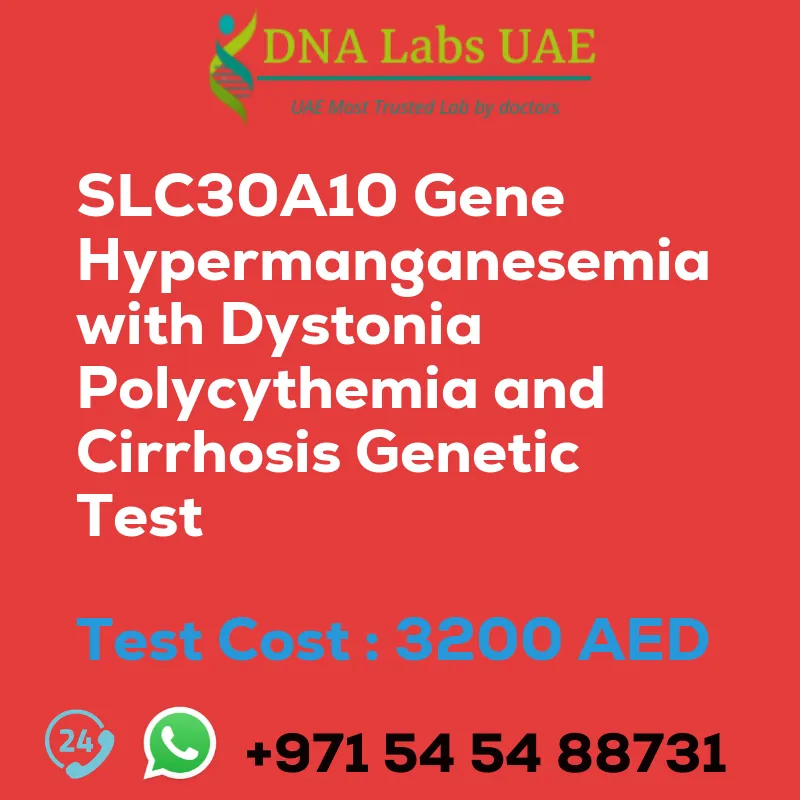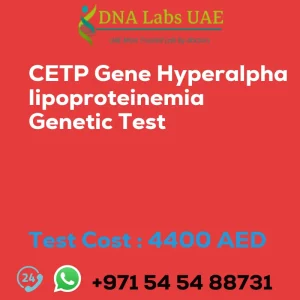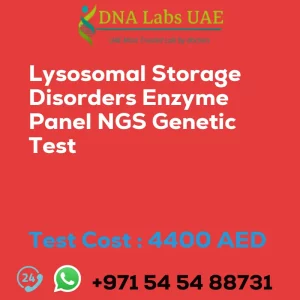SLC30A10 Gene Hypermanganesemia with Dystonia Polycythemia and Cirrhosis Genetic Test
Test Name: SLC30A10 Gene Hypermanganesemia with Dystonia Polycythemia and Cirrhosis Genetic Test
Components: NGS Technology
Price: 3200.0 AED
Sample Condition: Blood or Extracted DNA or One drop Blood on FTA Card
Report Delivery: 3 to 4 Weeks
Test Type: Metabolic Disorders
Doctor: General Physician
Test Department: Genetics
Pre Test Information: Clinical History of Patient who is going for SLC30A10 Gene Hypermanganesemia with Dystonia Polycythemia and Cirrhosis NGS Genetic DNA Test. A Genetic Counselling session to draw a pedigree chart of family members affected with Hypermanganesemia with dystonia, polycythemia, and cirrhosis.
Test Details
SLC30A10 gene hypermanganesemia with dystonia, polycythemia, and cirrhosis is a rare genetic disorder characterized by the accumulation of excessive amounts of manganese in the body. This condition is caused by mutations in the SLC30A10 gene, which is responsible for encoding a protein involved in the transport of manganese out of cells.
Individuals with hypermanganesemia may experience a range of symptoms, including movement abnormalities such as dystonia (involuntary muscle contractions), polycythemia (an increase in red blood cell count), and cirrhosis (scarring of the liver). These symptoms typically appear in childhood or early adulthood.
To diagnose hypermanganesemia with dystonia, polycythemia, and cirrhosis, a genetic test called Next-Generation Sequencing (NGS) can be performed. NGS is a high-throughput sequencing technology that allows for the simultaneous analysis of multiple genes or even the entire exome (the protein-coding region of the genome). This test can identify mutations in the SLC30A10 gene that are associated with hypermanganesemia.
Genetic testing can help confirm the diagnosis, provide information about the inheritance pattern of the condition, and guide treatment decisions. Although there is currently no cure for hypermanganesemia, management may involve reducing dietary manganese intake, chelation therapy to remove excess manganese, and symptomatic treatment for associated symptoms such as dystonia.
It is important to consult with a healthcare professional or a genetic counselor to discuss the benefits, limitations, and implications of genetic testing for hypermanganesemia with dystonia, polycythemia, and cirrhosis.
| Test Name | SLC30A10 Gene Hypermanganesemia with dystonia polycythemia and cirrhosis Genetic Test |
|---|---|
| Components | |
| Price | 3200.0 AED |
| Sample Condition | Blood or Extracted DNA or One drop Blood on FTA Card |
| Report Delivery | 3 to 4 Weeks |
| Method | NGS Technology |
| Test type | Metabolic Disorders |
| Doctor | General Physician |
| Test Department: | Genetics |
| Pre Test Information | Clinical History of Patient who is going for SLC30A10 Gene Hypermanganesemia with dystonia, polycythemia and cirrhosis NGS Genetic DNA Test A Genetic Counselling session to draw a pedigree chart of family members affected with Hypermanganesemia with dystonia, polycythemia and cirrhosis |
| Test Details |
SLC30A10 gene hypermanganesemia with dystonia, polycythemia, and cirrhosis is a rare genetic disorder characterized by the accumulation of excessive amounts of manganese in the body. This condition is caused by mutations in the SLC30A10 gene, which is responsible for encoding a protein involved in the transport of manganese out of cells. Individuals with hypermanganesemia may experience a range of symptoms, including movement abnormalities such as dystonia (involuntary muscle contractions), polycythemia (an increase in red blood cell count), and cirrhosis (scarring of the liver). These symptoms typically appear in childhood or early adulthood. To diagnose hypermanganesemia with dystonia, polycythemia, and cirrhosis, a genetic test called Next-Generation Sequencing (NGS) can be performed. NGS is a high-throughput sequencing technology that allows for the simultaneous analysis of multiple genes or even the entire exome (the protein-coding region of the genome). This test can identify mutations in the SLC30A10 gene that are associated with hypermanganesemia. Genetic testing can help confirm the diagnosis, provide information about the inheritance pattern of the condition, and guide treatment decisions. Although there is currently no cure for hypermanganesemia, management may involve reducing dietary manganese intake, chelation therapy to remove excess manganese, and symptomatic treatment for associated symptoms such as dystonia. It is important to consult with a healthcare professional or a genetic counselor to discuss the benefits, limitations, and implications of genetic testing for hypermanganesemia with dystonia, polycythemia, and cirrhosis. |








